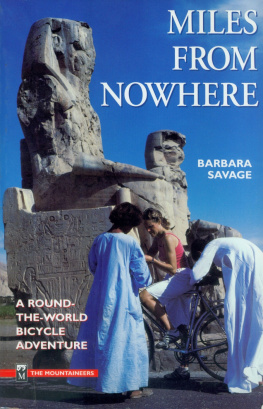Risky Shores
SAVAGERY AND COLONIALISM IN THE WESTERN PACIFIC
George K. Behlmer
STANFORD UNIVERSITY PRESS
STANFORD, CALIFORNIA
Stanford University Press
Stanford, California
2018 by the Board of Trustees of the Leland Stanford Junior University.
All rights reserved.
No part of this book may be reproduced or transmitted in any form or by any means, electronic or mechanical, including photocopying and recording, or in any information storage or retrieval system without the prior written permission of Stanford University Press.
Printed in the United States of America on acid-free, archival-quality paper
Library of Congress Cataloging-in-Publication Data
Names: Behlmer, George K., author.
Title: Risky shores : savagery and colonialism in the western Pacific / George K. Behlmer.
Description: Stanford, California : Stanford University Press, 2018. | Includes bibliographical references and index.
Identifiers: LCCN 2018004274 (print) | LCCN 2018005314 (ebook) | ISBN 9781503605954 (e-book) | ISBN 9781503604926 | ISBN 9781503604926 (cloth : alk. paper) | ISBN 9781503605947 (pbk. : alk. paper)
Subjects: LCSH: MelanesiaSocial life and customs. | MelanesiaForeign public opinion, British. | Great BritainColoniesOceaniaHistory. | Primitive societiesMelanesia.
Classification: LCC DU490 (ebook) | LCC DU490 .B44 2018 (print) | DDC 995dc23
LC record available at https://lccn.loc.gov/2018004274
Cover design: Cadence Design Studio | Preston Thomas
Cover art: Massacre of the Rev. John Williams, Possibly a George Baxter print commissioned by the London Missionary Society. British Museum.
Typeset by Newgen in 11/14 Adobe Garamond
For Jane, Loving critic
Contents
List of Illustrations
List of Maps
Acknowledgments
The risky shores of this books title refer to islands occupying the western Pacific Ocean. The encounters thereon between Europeans and indigenous peoples sometimes proved hazardous for all concerned. How white strangers and dark savages understood the risks they were taking by consorting with one another is the question at the core of this study.
Librarians and archivists on three continents have been gracious collaborators in my work. Two relentlessly helpful librarians deserve special thanks. Andy Carr, senior librarian at the State Library of New South Wales, Sydney, knew where to launch every investigation, however obscure the issue. And among research specialists at the University of Washingtons Suzzallo Library, Theresa Mudrock personified calm competence.
In Britain, I benefited from guidance at these London-based institutions: the British Library; the British Museum; the National Archives of the United Kingdom; Lambeth Palace Library; the Royal Geographical Society; and the School of Oriental and African Studies. The Bodleian Library and Rhodes House Library, venerable Oxford research centers both, could not have been more helpful. Selwyn College Archives, Cambridge, accommodated this scholar-on-the-fly.
Pacific archives supplied much of my evidence. Staff at the state libraries of New South Wales and Queensland were models of patience and good humor. In New Zealand, the Special Collections unit of Auckland University Library saw to it that I never waited for a file. In Suva, staff at the Fijian National Archives and the Fiji Museum Library unearthed materials that I would never have found unaided.
Several American records collections must be acknowledged as well: the Bancroft Library, University of California, Berkeley; the Library of the Marine Corps, Quantico, Virginia; the National Library of Medicine, Bethesda, Maryland; the Martin and Osa Johnson Safari Museum, Chanute, Kansas; the Phillips Library, Peabody Essex Museum, Salem, Massachusetts; and the Special Collections Department, Suzzallo-Allen Library, University of Washington, Seattle.
Numerous colleagues commented on parts of the manuscript. Philippa Levine, Theresa Mudrock, Frank Prochaska, Satadru Sen, and Susan Thorne vetted individual chapters. Jordanna Bailkin, Peter Hoffenberg, Rebecca Hughes, and David Smith plowed through most of a long study. Jane Cater, Jane Samson, and Pat Thane tackled the entire draft, as did two anonymous readers. Without these extra eyes, Risky Shores would have been much the poorer. Formulaic as it may be to say, I alone am responsible for all errors of fact and interpretation. Fortunately, I am not at all responsible for the photography and cartography on display in this volume. I thank Patricia McGiffert of University of Washington (U.W.) Health Sciences for the former, and Bill Nelson for the latter. Margo Irvin, history acquisitions editor at Stanford University Press, offered wise advice at key points in the publishing process.
Authors based at universities seldom manage to self-fund their research. That is certainly true in this case. A Christiansen Fellowship from St. Catherines College, Oxford, enabled me to spend three months reading widely on matters Pacific. It was during this Michaelmas Term 2000 that I decided to pursue the notion of savagery as applied to Pacific peoples. Thereafter, material support from University of Washington sources has been vital. The universitys Royalty Research Fund made possible an extended visit to Oceanic archives. A teaching-release grant from the Walter Chapin Simpson Center for the Humanities carved out uninterrupted time to write. Finally, the U.W. History Department has done much through its Keller Endowed Fund and Lenore Hanauer Faculty Research Fund to keep this project afloat.
My greatest debt, however, is to my wife, Jane Cater. I dedicate this book, as I did the last, to her.
G.K.B.
INTRODUCTION
The Protean Savage
On 2 April 1782, the Northumberland, a British ship engaged in the East India trade, left Sumatra bound for the Spice Islands and beyond. What cut short its voyage was a catastrophic encounter between the crew and savadges (as the only surviving eyewitness called them) living along the western shore of New Guinea. That eyewitness, an unnamed carpenters mate, would later present his journal to a gentleman in Calcutta. Although modern readers should not discount the possibility that the journals narrative was largely an exercise in fantasy, its tale added to the gradually emerging portrait of the western Pacific islands as citadels of barbarism.
Several months into its voyage, the Northumberland had become a death trap. Seven or eight sailors were perishing daily from want of greens... to Nourish them, for they were very bad with scurvy. In addition to fetching wood and water, therefore, the ships supply boat was ordered to find vegetables, and quickly. When the boats crew rowed within a quarter mile of the beach, the first mate could distinguish people carrying bamboo containers toward an apparent fresh water source; presumably the Northumberlands empty casks could be replenished there as well. But we were very much mistaken, explained the carpenters mate. Four low-ranking members of the resupply partythree Lascars and a Portuguestruggled ashore with the casks. Dark bodies rushed them from the jungle, hauling away these unfortunates to a nearby village. Simultaneously, arrows arced toward the waiting boat. The resupply party carried a few muskets with which they now returned fire. They did not possess sufficient weaponry to support a direct attack on the savadges, however, so a tense standoff followed. Taking a calculated risk, the first mate finally led fourteen men onto the beach. Mayhem ensued: They came down upon us like unto a half moon, men, women and children, such as could take a bow and arrow into
Whether an accurate rendering of events or a flight of fancy, this authors text was rich in the signs of savagery. The New Guineans depicted here were treacherous because they refused to fight in a civilized mannerthat is, using weapons and tactics familiar to Europeans. These Islanders were also impulsive, creatures of sudden passion. Savages were, moreover, capricious. (Why did these people spare one life and not another?) Most seemed cruel. From a European perspective at least, offering the carpenters mate broiled bits of his superior constituted malicious self-gratification: cruelty. Connecting these characteristics and imposing a degree of coherence on an otherwise unwieldy set of images was the notion that savage acts derive from unnatural feelings. Such acts involved a short-circuiting of instinct, a displacement of the normal by the grotesque. Thus, only an unnatural mother could kill her own infant. Similarly, the wish of a wife to be burned on her husbands pyre, or to be strangled before he went into the ground, struck Europeans as examples of perverted fidelity. And unless imminent starvation served to justify the unthinkable, South Seas cannibalism mocked the supposed dignity of man.
Next page







